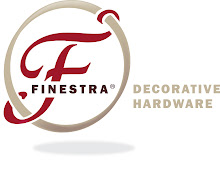Color, texture, and pattern is an ever changing palette for designers. Keeping a pulse on industry trends is an important part of being a creative professional. We attended the recent High Point Furniture Market and it provided us with inspiration, new color palettes, and creative techniques to bring back to our workroom and design center.
The two predominant background colors exhibited were variations of gray and taupe with pops of accent colors in plum, lavender, orange, aqua, and green. We even saw the resurgence of avocado green, rust, and mustard yellow!
Nail heads either decorative or rustic were exposed and on many of the upholstered pieces. Some were used in practical applications and others such as the diamond head upholstery nails above were used to create shiny accents and motifs within the furniture design itself.
One unique design tip we noticed was the textural accent that was created with the button forms sewn on the corner of the lavender pillow shown above. What a wonderful way to add dimension and depth to a tonal accent!

The handmade look has become infused in the design of pillows, drapery panels, lampshades and other home accents. This look also gives depth and dimension to a visually smooth surface. At market, drapery panels donned appliques and hand sewn cutouts. Pillows had felting and layers of fringe or ribbon tacked their surfaces.
The tactile experience continued with burlap and linen fabrics on everything from draperies and lampshades to bedding and floor coverings. Weaving and layering these textures in and out of designs was very popular. The juxtaposition of tailored and traditional techniques like smocking on time worn burlap created intrigue and drama in what is usually a simple accent.
Contemporary graphic prints on fabrics and floor coverings were abundant in mod hues of gray and taupe with the interesting high gloss additions of patent leather and shiny sequins and stones. Paired with these eye-catching accents were matte furniture finishes of driftwood and weathered patinas.
The take-aways from High Point were in the details! The base for much of our design as far as colorway (gray and taupe) has stayed the same over the past couple of years, but the embellishments have increased and are being used in new and different ways. Texture is the #1 take-away from the market. How you choose to use it is up to you. It can be achieved by playing with gloss and matte finishes, weaving and layering, hand-sewing appliques, and eye-catching accents like diamond head upholstery nails.
What inspired you at market?











.jpg)








